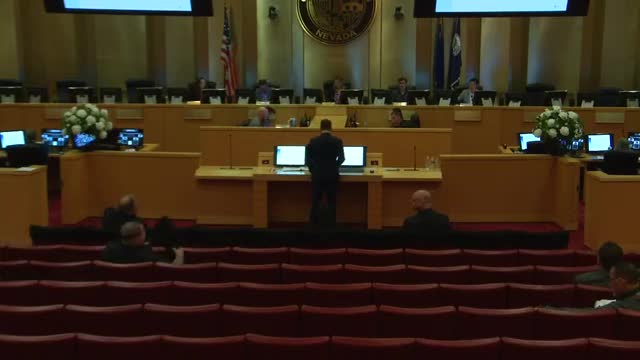IT Audit Reveals Major Asset Reporting Failures
October 07, 2024 | Las Vegas , Clark County, Nevada
This article was created by AI summarizing key points discussed. AI makes mistakes, so for full details and context, please refer to the video of the full meeting. Please report any errors so we can fix them. Report an error »

In a recent government meeting, the audit of the IT hardware asset controls was a focal point, revealing significant discrepancies in asset management between the IT and finance departments. The audit aimed to assess whether IT was accurately verifying the location and status of controlled hardware assets and whether reports to finance were complete and accurate.
The findings highlighted three main issues: inadequate identification of controlled assets, insufficient documentation of verification procedures, and discrepancies in reporting to finance. In response, the audit team proposed seven recommendations to improve asset management practices, including the need for IT to clearly define controlled assets, document verification criteria, and synchronize reporting processes with finance.
A particularly concerning aspect of the audit was the status of 261 fixed assets under IT's purview. IT confirmed that 172 assets were either accounted for or properly retired, leaving 89 assets unaccounted for, representing 34% of the total and a capitalized cost of approximately $2 million. Subsequent verification efforts revealed that 71 assets were located, while 14 were reported as retired without adequate disposal documentation, raising concerns about compliance with city disposal policies.
During the meeting, IT Director Michael Sherwood acknowledged the challenges faced in asset tracking and committed to improving communication and processes between IT and finance. CFO Susan Hultzely emphasized the importance of reconciling records in the new asset management system, ServiceNow, which had not been adequately aligned with finance records since its implementation three years ago.
Both departments are now working towards monthly reconciliations of capitalizable assets to prevent future discrepancies. The next audit committee meeting is scheduled for January 6, 2025, where progress on these recommendations will be reviewed. The discussions underscored the critical need for robust asset management practices to ensure accountability and transparency in public spending.
The findings highlighted three main issues: inadequate identification of controlled assets, insufficient documentation of verification procedures, and discrepancies in reporting to finance. In response, the audit team proposed seven recommendations to improve asset management practices, including the need for IT to clearly define controlled assets, document verification criteria, and synchronize reporting processes with finance.
A particularly concerning aspect of the audit was the status of 261 fixed assets under IT's purview. IT confirmed that 172 assets were either accounted for or properly retired, leaving 89 assets unaccounted for, representing 34% of the total and a capitalized cost of approximately $2 million. Subsequent verification efforts revealed that 71 assets were located, while 14 were reported as retired without adequate disposal documentation, raising concerns about compliance with city disposal policies.
During the meeting, IT Director Michael Sherwood acknowledged the challenges faced in asset tracking and committed to improving communication and processes between IT and finance. CFO Susan Hultzely emphasized the importance of reconciling records in the new asset management system, ServiceNow, which had not been adequately aligned with finance records since its implementation three years ago.
Both departments are now working towards monthly reconciliations of capitalizable assets to prevent future discrepancies. The next audit committee meeting is scheduled for January 6, 2025, where progress on these recommendations will be reviewed. The discussions underscored the critical need for robust asset management practices to ensure accountability and transparency in public spending.
View full meeting
This article is based on a recent meeting—watch the full video and explore the complete transcript for deeper insights into the discussion.
View full meeting